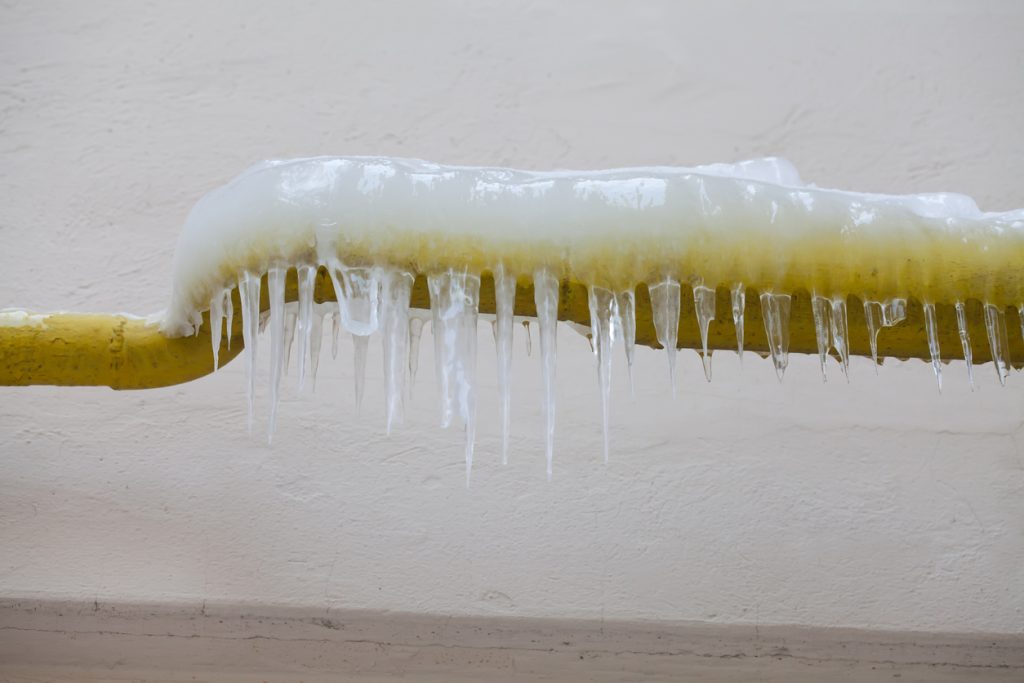Tips to Protect Your Plumbing from Cold Weather: Essential Tips
Tips to Protect Your Plumbing from Cold Weather: Essential Tips
Blog Article
Were you interested in resources concerning Helpful Tips to Prevent Frozen Pipes this Winter?

Cold weather can ruin your pipes, particularly by freezing pipes. Here's how to prevent it from occurring and what to do if it does.
Introduction
As temperature levels drop, the threat of frozen pipes increases, potentially bring about pricey repair services and water damage. Understanding exactly how to avoid frozen pipelines is important for house owners in cool climates.
Prevention Tips
Insulating at risk pipes
Wrap pipelines in insulation sleeves or utilize warmth tape to protect them from freezing temperature levels. Concentrate on pipelines in unheated or outside locations of the home.
Home heating methods
Maintain indoor spaces sufficiently warmed, specifically areas with pipes. Open cabinet doors to permit cozy air to flow around pipes under sinks.
Just how to recognize icy pipelines
Seek lowered water flow from taps, unusual odors or noises from pipes, and visible frost on subjected pipelines.
Long-Term Solutions
Structural changes
Consider rerouting pipes away from outside walls or unheated areas. Add additional insulation to attics, basements, and crawl spaces.
Updating insulation
Purchase high-quality insulation for pipes, attic rooms, and walls. Correct insulation aids preserve constant temperatures and decreases the risk of frozen pipes.
Shielding Exterior Pipes
Garden hoses and exterior faucets
Separate and drain pipes garden hose pipes before winter. Mount frost-proof spigots or cover outdoor faucets with insulated caps.
Understanding Frozen Pipelines
What triggers pipelines to ice up?
Pipes ice up when subjected to temperatures listed below 32 ° F (0 ° C) for extended periods. As water inside the pipes freezes, it broadens, taxing the pipeline wall surfaces and possibly creating them to rupture.
Risks and problems
Frozen pipelines can lead to water system interruptions, property damages, and costly repair services. Burst pipes can flood homes and create extensive architectural damage.
Indicators of Frozen Pipeline
Identifying frozen pipelines early can avoid them from bursting.
What to Do If Your Pipelines Freeze
Immediate actions to take
If you presume icy pipes, keep faucets open to eliminate pressure as the ice thaws. Make use of a hairdryer or towels soaked in hot water to thaw pipes gradually.
Verdict
Preventing icy pipelines needs proactive procedures and quick responses. By comprehending the reasons, indicators, and safety nets, property owners can safeguard their pipes during cold weather.
5 Ways to Prevent Frozen Pipes
Drain Outdoor Faucets and Disconnect Hoses
First, close the shut-off valve that controls the flow of water in the pipe to your outdoor faucet. Then, head outside to disconnect and drain your hose and open the outdoor faucet to allow the water to completely drain out of the line. Turn off the faucet when done. Finally, head back to the shut-off valve and drain the remaining water inside the pipe into a bucket or container. Additionally, if you have a home irrigation system, you should consider hiring an expert to clear the system of water each year.
Insulate Pipes
One of the best and most cost-effective methods for preventing frozen water pipes is to wrap your pipes with insulation. This is especially important for areas in your home that aren’t exposed to heat, such as an attic. We suggest using foam sleeves, which can typically be found at your local hardware store.
Keep Heat Running at 65
Your pipes are located inside your walls, and the temperature there is much colder than the rest of the house. To prevent your pipes from freezing, The Insurance Information Institute suggests that you keep your home heated to at least 65 degrees, even when traveling. You may want to invest in smart devices that can keep an eye on the temperature in your home while you’re away.
Leave Water Dripping
Moving water — even a small trickle — can prevent ice from forming inside your pipes. When freezing temps are imminent, start a drip of water from all faucets that serve exposed pipes. Leaving a few faucets running will also help relieve pressure inside the pipes and help prevent a rupture if the water inside freezes.
Open Cupboard Doors
Warm your kitchen and bathroom pipes by opening cupboards and vanities. You should also leave your interior doors ajar to help warm air circulate evenly throughout your home.

I was shown that report on Preventing and dealing with frozen pipes through someone on our other web property. Are you aware of another person who is interested in Preventing and dealing with frozen pipes? Feel free to share it. We truly appreciate reading our article about How To Avoid Freezing Pipes.
Free Quote Report this page